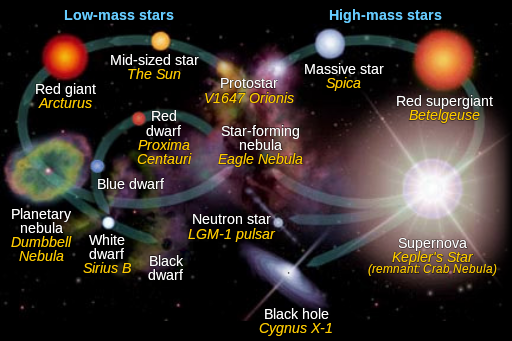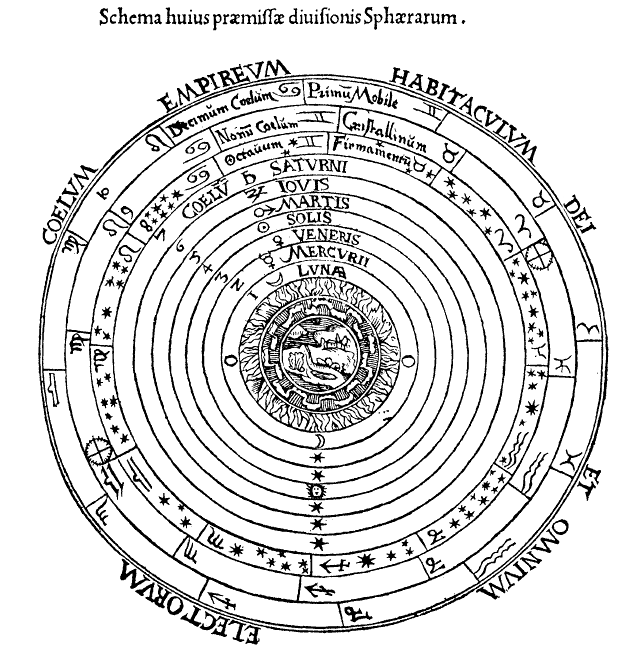As planetarium astronomer, my job includes fielding astronomy related questions from the public. A couple of weeks ago, I received in the mail several perceptive questions from Madison, a third grader in Lawrence, Kansas. After answering them, I realized that the answers, and the questions that elicited them, might benefit many of our BEYONDbones readers. After all, they are basic questions about the universe that many people ask here at our planetarium. Thus, I’d like to share them with you.
Image courtesy of Wikimedia Commons. Author: NASA/JPL-Caltech
1, 2, 3) Why are planets made? Why are stars made? How are planets made?
Stars form when large clouds of gas and dust collapse under their own gravity. (Since they collapse to form a star like our Sun, these would be ‘clouds’ much bigger than what we see in the sky). As more of the mass falls to the center due to gravity, the cloud heats up. If the temperature heats up to 10 million degrees, it’s hot enough to make new elements. Making new elements gives off heat and light as by-products—the star has begun to shine! By the way, all elements except the two very simplest ones, hydrogen and helium, exist only because stars make them. Yes, stars make everything we’re made of.
Any gas or dust left over when a star forms can form into planets going around the star.
Image courtesy of Wikimedia Commons. Author: cmglee, NASA Goddard Space Flight Center
4. How long do stars live?
How long stars shine depends on how big and massive they are; smaller stars shine longer. Our Sun will shine for 10 billion years (it has about five billion to go). The smallest stars can shine for trillions of years. The biggest stars shine for millions of years, which is a long time for you and me but much less time than our Sun.
Image courtesy of Wikimedia Commons. Author: ESO/S. Ramstedt (Uppsala University, Sweden) & W. Vlemmings (Chalmers University of Technology, Sweden
5. Do planets ever die?
Sometimes. For example, after about five billion more years our Sun will swell up and become a red giant. That will make the Sun so big that its ‘surface’ will come all the way out to where Earth is, and then swallow the Earth! That, of course, will kill all life on Earth and likely destroy it.
Image courtesy of Wikimedia Commons.
6. Why are stars called stars? Why are planets called planets?
The planet comes from the Greek, and it means ‘wanderer’. Ancient people could see that stars formed the same patterns for their whole lives, but a few ‘stars’ moved from night to night against these patterns. The Greeks called these ‘wanderers’, which in their language is ‘planet’ . The word ‘star’ on the other hand, is over 5,500 years old–older than the English language. It’s one of the words already in the English language as it first developed. There’s no way to be sure who picked it and why.
Image courtesy of Wikimedia Commons. Author: Bruno Gilli/ESO
7. Who named the Galaxy?
Most ancient people who saw the galaxy band across our sky thought of it as a river. The ancient Greeks, though, believed it was spilled milk. In their story, when Hera, queen of the gods, was asleep, other gods put Hercules on her breast to drink immortal milk. Hera couldn’t stand Hercules, though, so when she woke up and saw him on her breast she yanked him off, spilling milk across the sky. So it was the ancient Greeks who called it the ‘Milky Way’, or, in their language, ‘Galaxy’.










